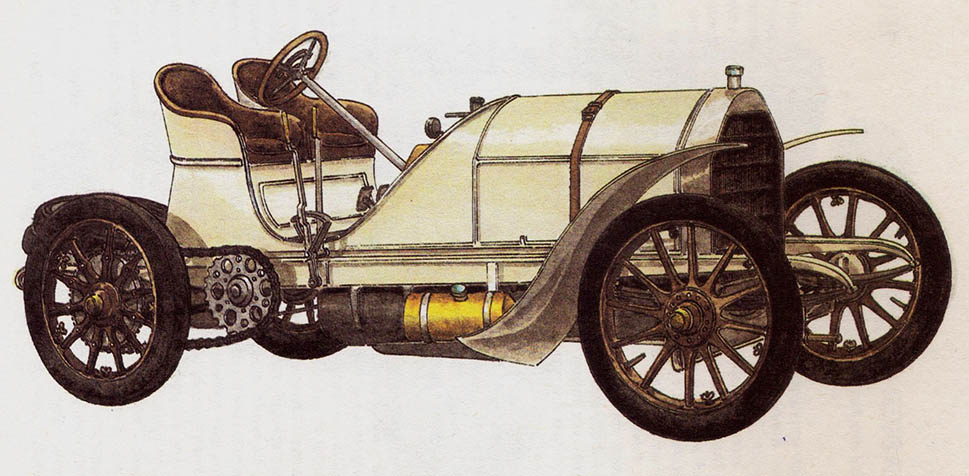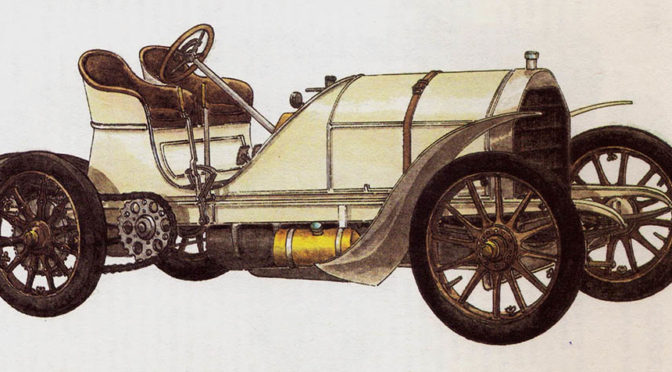MERCEDES – year 1903
Daimler Motor Company, Bad Cannstatt, Germany.
W 1903 of the year, the Gordon Bennett Cup moved to Great Britain thanks to the victory of the Englishman S.. F. Edgar, who in a car Napier won the race between Paris and Innsbruck last year. Because British regulations did not allow races to be organized on an open circuit, they took place in Ireland on a closed track, south of Dublin. These were actually the first races of this type.

Daimler Motor Company, Bad Cannstatt, Germany.
From Germany, three Mercedes power cars were entered for the start 66,2 kW (90 KM), manufactured specifically for racing purposes. However, a few days before take-off, during a hall fire at the Daimler factory in Cannstatt, all three vehicles were destroyed. Therefore, it was necessary to quickly prepare passenger versions with power 44,1 kW (60 KM), which they were supposed to lead: Belg Camille Jenatzy, Francuz baron de Caters i Anglik Foxhall-Keene, because the German automobile club did not allow amateur competitors to start. The Gordon Bennett Cup won with an average speed 89,18 km / h Jenatzy, called "the red devil” because of the red beard and the wild way of riding.
The winning Mercedes had a chassis frame made of steel U-profiles, to which the crossbars were riveted. Rigid axles were suspended on longitudinal semi-elliptical springs. The brakes on the rear wheels were operated by a hand lever, the foot brake acted on the drive shaft. The four-cylinder engine with mechanically controlled side valves had a capacity 9240 cm3 and reached power 44,1 kW (60 KM) by 1100 RPM. The diameter of the cylinders was 140 mm, a stroke of the piston 150 mm. The source of ignition was a high-voltage magneto. The driving force was transferred from the engine via a cone clutch to a four-speed gearbox with a” shifting gears. The gearbox and the drive from the differential were placed in one housing, from where the drive was transmitted via chains to the rear wheels. The wooden spoke wheels were not interchangeable back then, which greatly complicated the repair of minor defects. The vehicle was reaching its top speed 128 km/h.
